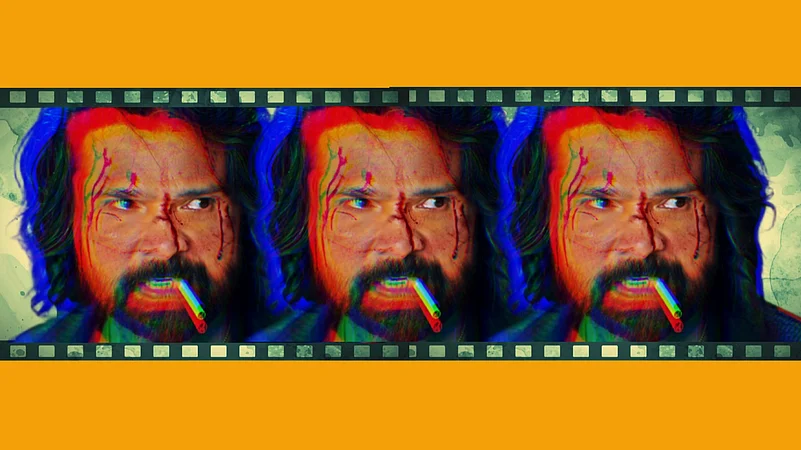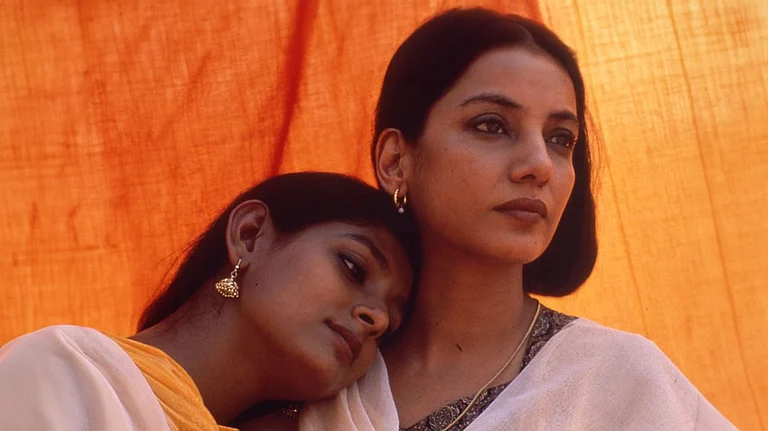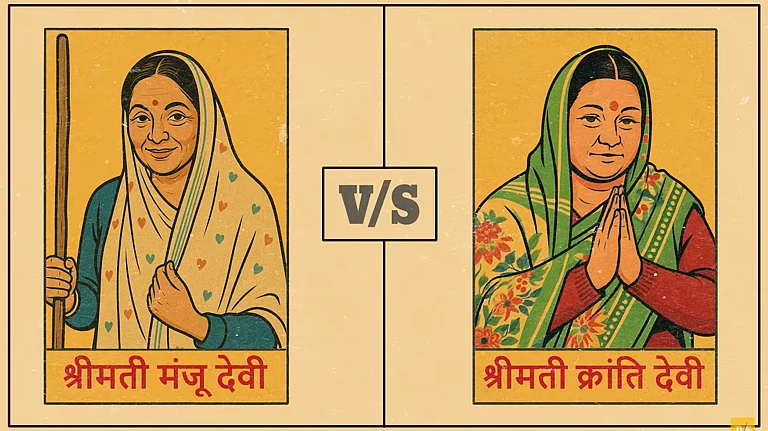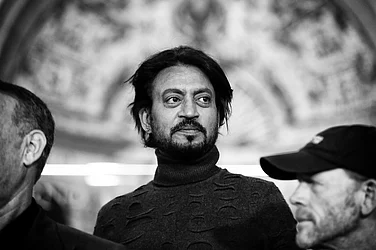When the first teaser for Badass Ravi Kumar (2025) hit the internet, it didn’t gently ask for attention—it airhorned its way into our timelines like a 3 AM WhatsApp forward. It wasn’t the kind of content to soft-launch its chaos. It was flung into our faces with a flaming leather jacket and Himesh Reshammiya’s eternal sneer. This was not a film. This was an announcement. An anti-streaming manifesto. A cinematic middle finger to taste, to restraint, to the tyranny of good sense.
Badass Ravi Kumar is pure spectacle—an overcooked, over cranked resurrection of 1980s Bollywood machismo, soaked in energy drink and bootcut jeans. It doesn’t parody the past. It doesn’t even reflect on it. It reanimates it like a meme-god Frankenstein, complete with synth riffs, exploding jeeps, and punchlines delivered with the intensity of a man who’s never lost a karaoke battle. And at the center of this fever dream is Himesh: cap tilted just so, shades permanently fused into his aura, and a voice tuned to the frequency of divine melodrama. You don’t watch him act—you surrender.
But Himesh isn’t content to stay on screen. He’s taken this energy offstage, into the real world. His recent ‘Cap Mania Tour’ in Mumbai is the film’s natural sequel, only with more fog machines and fewer CGI tigers. On stage, he snarls at his critics, asks fans if they're bored (spoiler: they're not), and performs as if possessed by the ghost of a man who never stopped believing in the power of a high note and a low camera angle. It’s not cringe. It’s religion.
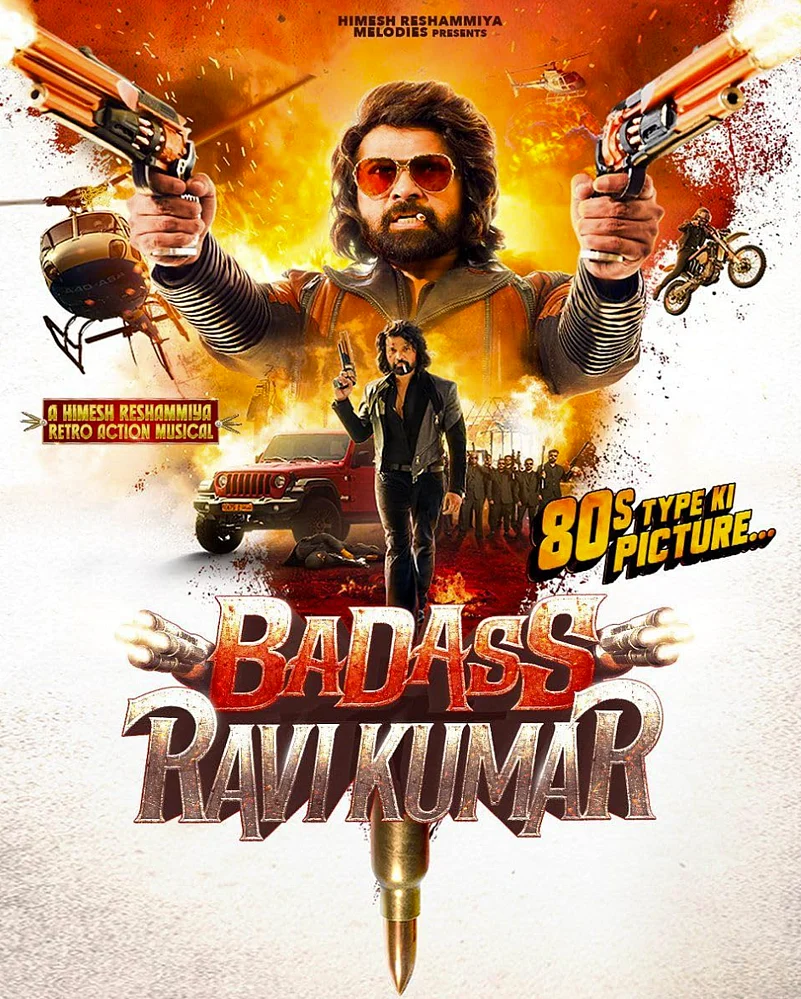
So why does all this make so many people—especially critics, hipsters, and the terminally ironic—so uncomfortable? It’s because Badass Ravi Kumar and the ‘Cap Mania Tour’ don’t just embrace cringe. They weaponise it. They detonate it. And in doing so, they expose the classist, elitist, and algorithmic machinery that undergirds our definitions of taste.
Let’s be clear: this isn’t an accident. Reshammiya knows exactly what he’s doing. He’s not an outsider who stumbled into virality. He’s a veteran of the limelight who understands the value of excess. He’s not camp because he’s unaware; he’s camp because he’s too aware. And he’s not cringe because he fails—he’s cringe because he dares.
Cringe, after all, is less about the content than the reaction. It’s not just a wince—its moral judgement masquerading as taste. It’s the involuntary shudder we experience when someone performs outside the boundaries of aesthetic fluency. In the internet age, this feeling has mutated into a full-blown genre, a digital caste system that divides the performative elite from the so-called "embarrassing masses." But what happens when someone like Himesh storms that gate with a fog machine and a vengeance monologue?
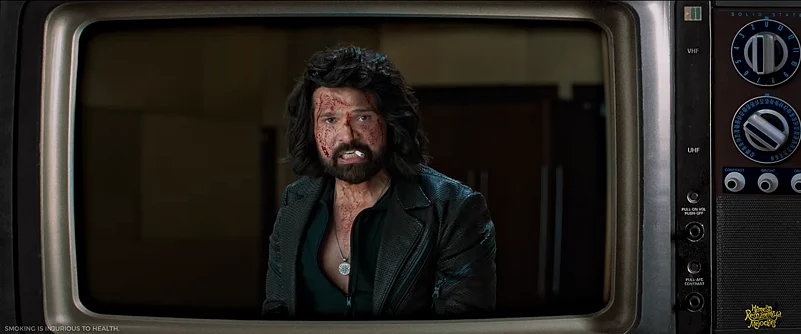
He becomes uncategorisable. Unironisable. He scrambles the meme economy because he’s both self-aware and dead serious. He's David Brent with choreography. He's a ‘lolcow’ who charges for tickets. And that’s what makes Badass Ravi Kumar so unsettling. It refuses to be safely bad. It’s not content to be laughed at. It demands to be loved—or at least endured with reverence. It’s a film that doesn’t wink. It stares directly into your soul and screams “I am emotion!” then rides away on a flaming rickshaw. This is not nostalgia with quotation marks. It’s nostalgia as a nerve gas.
The Cringe Economy and the Politics of Performance
We live in an aesthetic surveillance state, where every moment of sincere expression is a potential crime against the vibe. In this landscape, cringe operates like a bouncer at the club of cool—it decides who gets in, based on how fluently they speak in filters, irony, and knowing glances. And if Badass Ravi Kumar feels like it was made by someone who doesn’t care about that grammar, it’s because it was.
Himesh’s aesthetic is aggressively analog in a digital world. He doesn’t perform for the algorithm. He performs against it. His acting choices are rooted not in subtlety but in decibel count. His dialogue delivery doesn’t subtext—it texts in all caps, with extra exclamation marks. This is anti-slick cinema. Unstreamable cinema. Cinema that refuses to shrink into your phone screen.
And that’s why it feels dangerous. Because in a media landscape where failure is monetized and polish is politicised, sincerity is subversive. It reveals the falseness of the polished grid. It dares to care too much.

Camp, Class, and Cultural Policing
Cringe is camp without a press release. It’s what happens when someone reaches for the stars and lands in a meme folder. But here’s the catch: not everyone gets to be “so bad it’s good.” Some people are just labeled bad—forever. Cringe, then, is not just a vibe. It’s a weapon. And it’s wielded most viciously against those without cultural capital.
A TikTok from Kurla with weird lighting and overacted gestures gets dismissed as provincial. A Wes Anderson parody with symmetrical frames and a French pop soundtrack gets called art. The difference? The former doesn’t apologise. The latter preempts its cringe with a wink. And that wink—that semiotic fluency—is the currency of the cool.
Badass Ravi Kumar doesn’t wink. It screams—which is why it’s immediately rendered uncool. But in its uncoolness lies its power. It doesn’t beg for critical redemption. It dares critics to catch up.
And this is where the ‘Cap Mania Tour’ becomes more than a promotional gimmick. It becomes an aesthetic protest. It tells the crowd: “I see your sneer. I hear your think pieces. And I will respond with fireworks, belt notes, and neon tears.” Reshammiya is not performing for the New York Times. He’s performing for the people who still believe a movie climax should involve at least three slow-motion punches and a dialogue about mother’s milk.
Cringe as Counterculture
In an era where every gesture is curated, every performance pre-filtered, Himesh’s maximalism is oddly punk. He represents a refusal to be legibly ironic. He is a content creator who never learned the language of vibe checks and never wanted to.
This is not to say Badass Ravi Kumar is above critique. It’s messy, bombastic, and often incoherent. But it’s also fully, wildly, joyously committed. It’s what happens when sincerity doesn’t fear failure. And in a culture addicted to the smooth, the minimal, the tastefully detached—that commitment is powerful.
We hate-watch because we’ve forgotten how to love without conditions. We cringe because we’re afraid to try. And Himesh? He doesn’t care. He’s already on the next verse.
Tirna Chatterjee has a PhD in Cinema Studies from School of Arts and Aesthetics, JNU. She currently works as an Associate Manager at the Kolkata Centre for Creativity.







